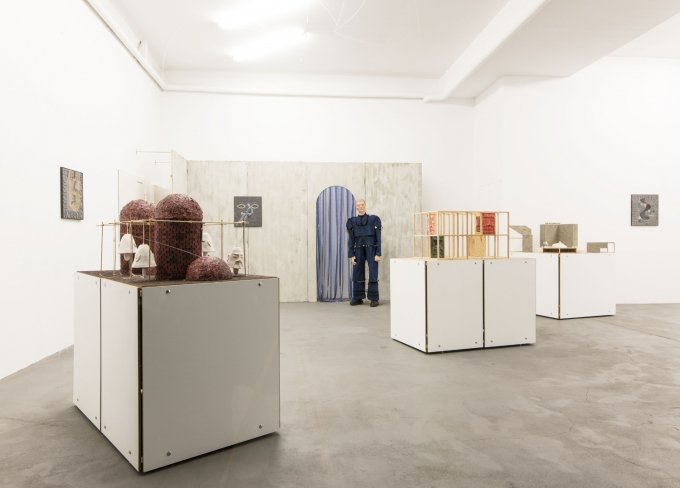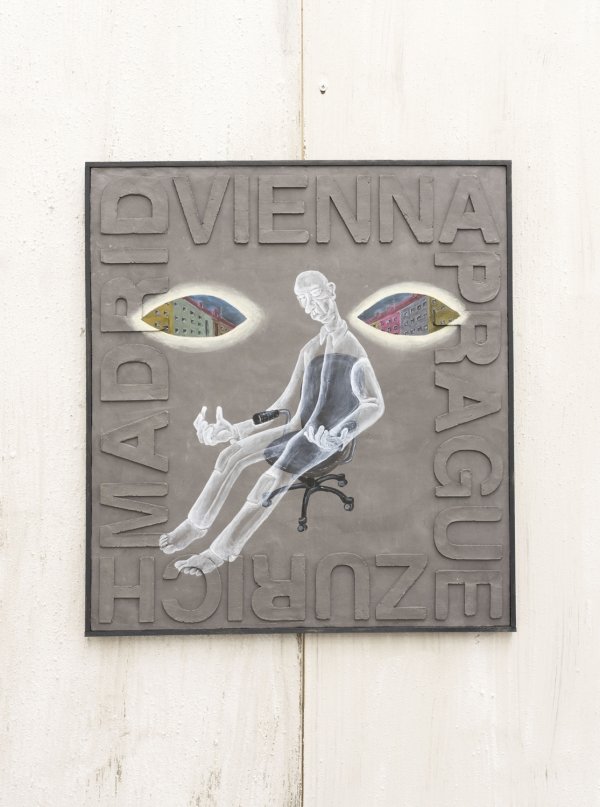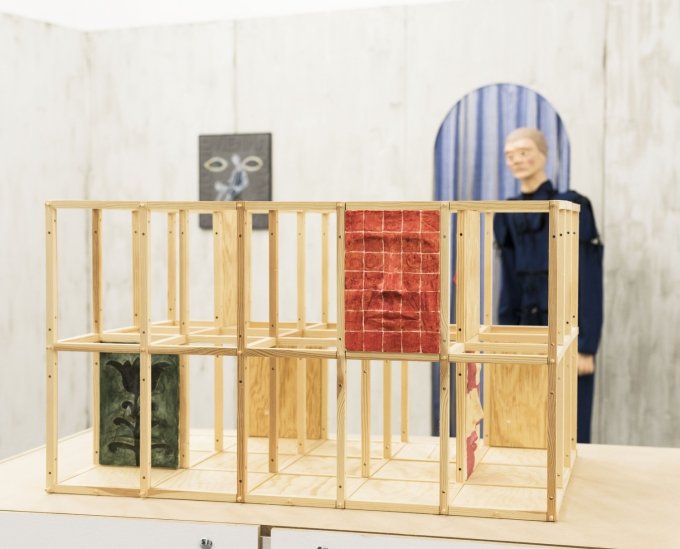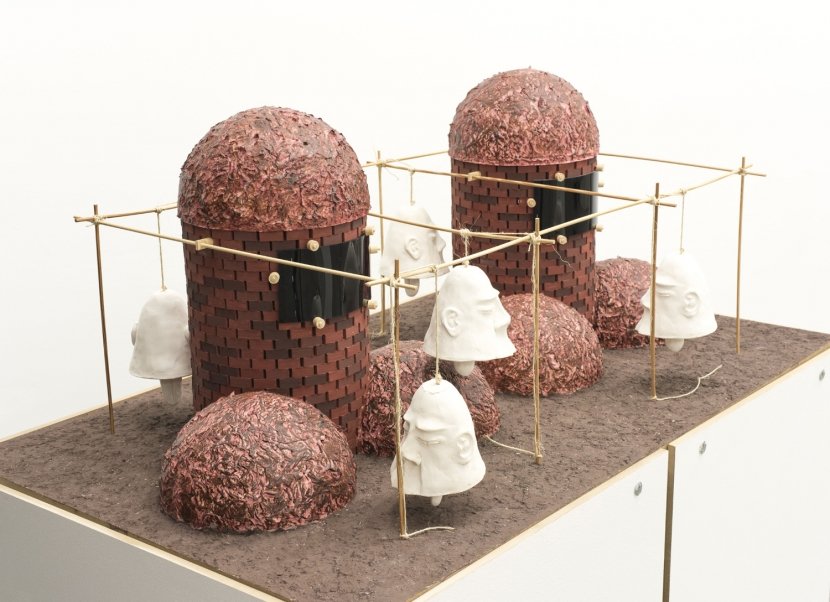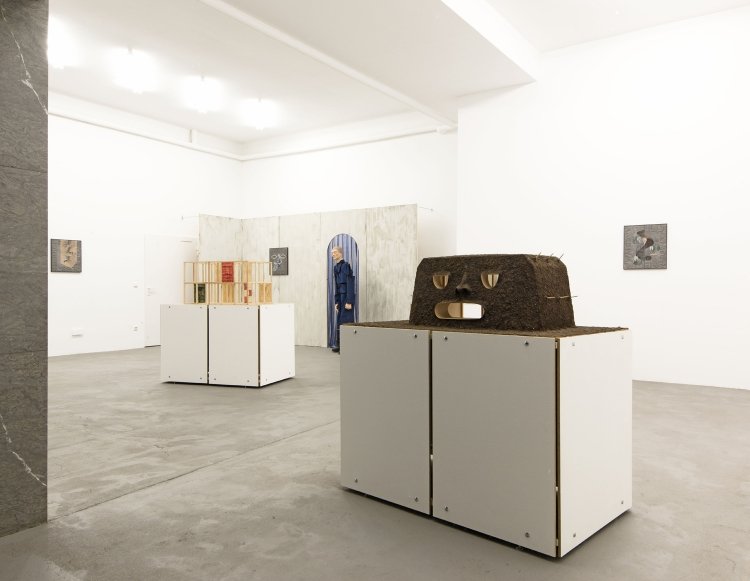Stefan Fuchs im Neuen Essener Kunstverein, Essen
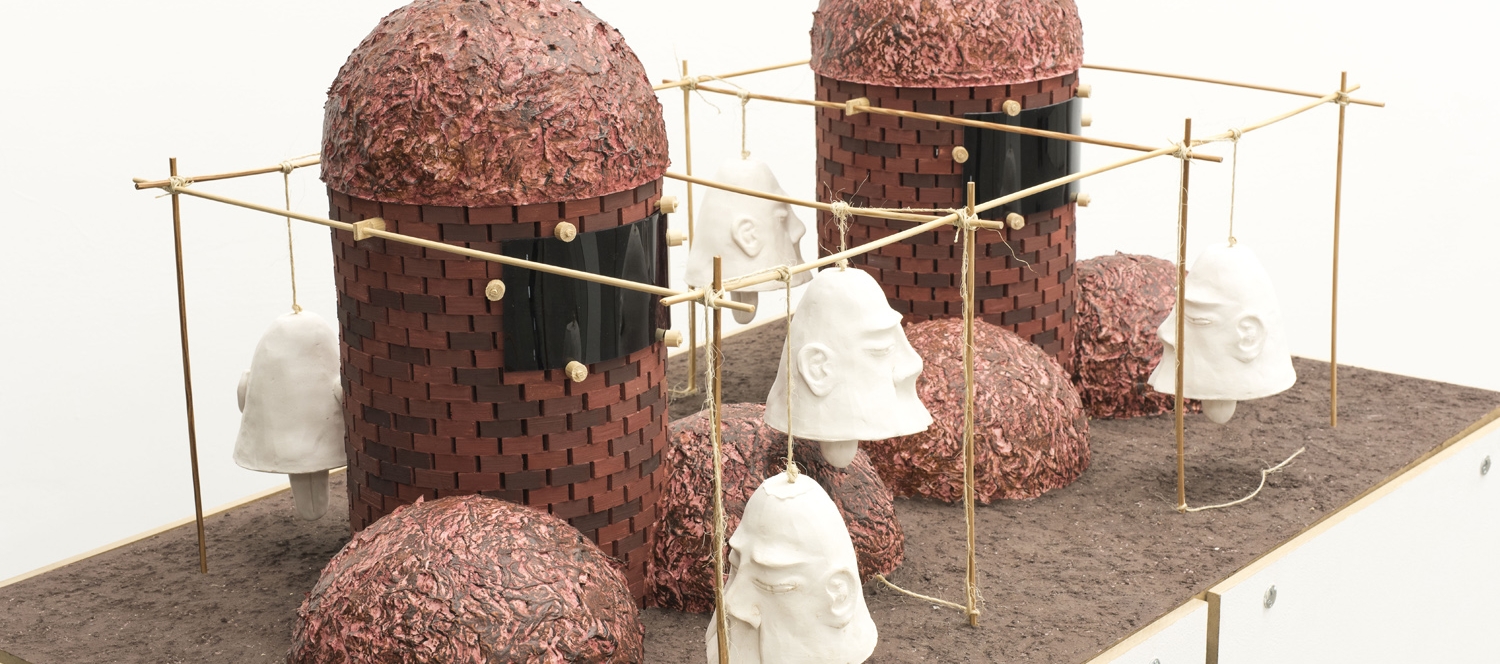
Neuer Essener Kunstverein
Bernestrasse 3, 45127 Essen
Deutschland
KünstlerIn: Stefan Fuchs
Titel: Neue Zentren (New Centers)
Datum: 31. August – 10. November 2019
Fotografie: All images copyright and courtesy of the artist and Philipp Kurzhals/Neuer Essener Kunstverein
Notiz: Kuratiert von Moritz Scheper
Ausstellungstext:
The title of Stefan Fuchs' exhibition sounds like a slogan of the 60s. New Centers reminds of urbanism and avant-garde, of new places and forms of social coexistence, in short: of utopias that have long since gone out of fashion. What was planned in the 1960s and 1970s as large housing estates or relief cities on the outskirts of conurbations, or was launched at a previously undeveloped location remote from urban structures, did, at best, unite functional concerns - more living space for more people - with ecological, technical and political ambitions. Modular architectures adaptable to individual needs, self-sufficient residential complexes intended for all areas of life, or constructing with ecological aspirations: these ideas had their roots in a time of radical rethinking of human interaction and were embedded in the great social upheavals of the 1960s. A time that is now a long way off, but which is still gladly adduced when it comes to discussing the future of living.
This is the background against which the exhibition New Centers unfolds. In front of a stage backdrop with the charm of brutalist concrete buildings, architectural models are set up like small islands in space. A life-size figure, possibly the architect himself, looks at them with empty eyes and a tired gaze. He hardly seems to notice what stands in front of him: a simple cuboid that has outgrown the earth; a grid-shaped, permeable wooden structure; fortified double towers “looking” at each other; but also a house of clay domes arranged like petals and connected to one another. These idiosyncratic creations of the architect propagate different ways of living with and against each other. Their finely shaped faces remind us that the well-being of people depends fundamentally on the character of their dwelling. But the mood is clouded. The designs resemble utopian building projects in the middle of the 20th century – better buildings for a better life – only more sedate, clumsier, sadder.
In fact, the models lack the light-footed eccentricity of their role models, such as Paolo Soleri's Arcosanti settlement. Founded in 1970 in the desert north of Phoenix, Arizona, it was dedicated to the concept of arcology – the fusion of architecture and ecology. In this car-free settlement, which subtly blends into the landscape with visionary design, the community was meant to be able to produce everything it needs for a living. Or Mike Reynolds' extravagant Earthships, energy-self-sufficient houses that he has been building around the globe since 1971 from residual materials such as old car tires, glass bottles or clay, and that can do without electricity, external water supply or heating. Or Wallace Neff's Bubble Houses of the 1940s, which were to be cast in concrete over inflatable domes thus providing affordable and democratic living space.
DIY culture, recycling, energy efficiency and affordable construction – the grounding ideas of these projects sound like answers to the current debates on housing shortages, sustainability and resource conservation. These questions are being discussed today when it comes to designing livable housing in old and new structures, at a time when living has long since become key for a self-determined life. Nevertheless, there may be no real euphoria when looking at the models of New Centers. The spirit of the ecological-social utopia that its role models exuded seems used up, desolate. Perhaps it is because only a few of these utopian projects were granted the privilege of becoming reality; because too many of these built utopias were turned upside down; and because the hope of the unalienated life they promised is now being capitalized.
The architectural models with their droll, clumsy forms and love for details seem like the perfect New Centers for the 21st century’s exhausted self – a self that is mobile, creative, independent and always a bit overwhelmed. And they humorously depict what it means to be an artist. Against all odds, and armed with work gloves, safety shoes and functional clothing, they embark upon enriching society with their ideas. Hopefully. Patrizia Dander

